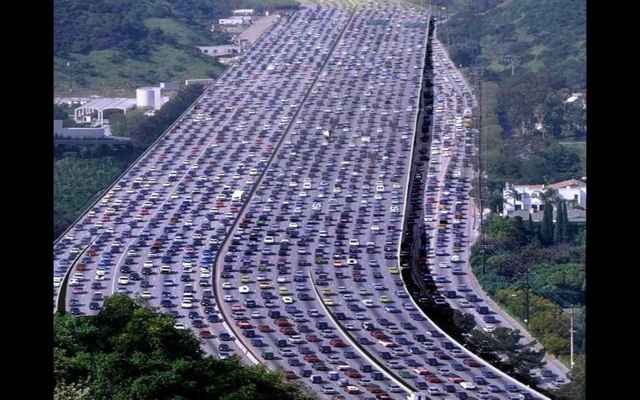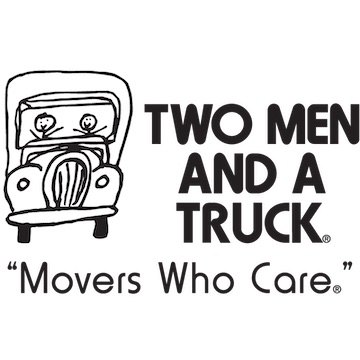Wider. Straighter. Smoother. Faster.

Originally published: August 31, 2011
Level-of-Service
OK, here at Bike Delaware World Headquarters, we love jargon. And one of our favorite pieces of jargon is “level-of-service” (LOS) which refers to the typical delays experienced by cars at a particular place. For example, the mecca of traffic engineering, level-of-service A:
(Wikipedia): Level-of-Service A describes free-flow operations. Traffic flows at or above the posted speed limit and all motorists have complete mobility between lanes. The average spacing between vehicles is about 550 ft(167m) or 27 car lengths. Motorists have a high level of physical and psychological comfort. The effects of accidents or breakdowns are easily absorbed. An example of LOS A occurs late at night in urban areas, frequently in rural areas, and generally in car advertisements.
There are also definitions of Level-of-Service B, C, D, E and, finally, the dreaded, horrible, level-of-service F:
(Wikipedia): Level-of-Service F describes a breakdown in vehicular flow. Flow is forced; every vehicle moves in lockstep with the vehicle in front of it, with frequent slowing required. Technically, a road in a constant traffic jam would be at LOS F. This is because LOS does not describe an instant state, but rather an average or typical service. For example, a highway might operate at LOS D for the AM peak hour, but have traffic consistent with LOS C some days, LOS E or F others, and come to a halt once every few weeks. However, LOS F describes a road for which the travel time cannot be predicted. Facilities operating at LOS F generally have more demand than capacity.
Nobody – with the exception of a few urbanists and urban planners here and there – likes congestion and level-of-service “failure”. Judging by the effectiveness of automobile advertisements, we all want level-of-service A: empty roads all to our selves. But it’s worth noting the consequences of constantly and repeatedly trying to spend and engineer our way out of level-of-service failures:
Whenever you increase level-of-service, you make it possible for people to drive farther in less time. That makes it practical for more people to live further from their jobs, send their children to more distant schools and shop at increasingly distant locations. Average vehicle miles increase and, as more vehicles travel longer distances, level-of-service decreases again, which leads to further road “improvements”, which leads to an increase in vehicle miles traveled, which leads to…you get the idea.
And yet, this is where we are, even in 2011. The exact same feedback loop that drove transportation investments in 1961 is just as strong 50 years later. In fact, as self-defeating as it is, we have actually written minimum level-of-service requirements into law.
We all know how pedestrians and bicyclists have been practically extinguished in our suburbs as our public ways have been continuously widened, straightened and smoothed and traffic engineers seek a continuously receding holy grail of road engineering perfection. But while the “capacity”, “efficiency” and level-of-service have been improved over and over again the result isn’t even auto-utopia. Traffic volume simply increases after every “improvement” until the road again becomes congested during peak traffic periods. (At off-peak hours, those same roads can often be practically empty – which is an open invitation to speeding and even drag racing.)
Is there any way to break this feedback loop? Well, one question that might be worth asking is, are there any circumstances under which we are prepared to accept level-of-service “failure”? Or, to think even more outside of the box, maybe even embrace it?
RELATED:
• Can a Stroad Ever Be a “Complete Street”?
• The Important Difference Between a Road and A Street
• Do Conversations Like This Still Happen in 2011?
• First, Do No Harm to Pedestrians and Bicyclists
• “Complete Streets” = Routine Accommodation





One Response
Love the article! Should also add that as friction on roadways is deceased congestion moves outward in ever-widening circles! In other words even more of the road network gets congested! This we often overlook. It's not that only the congested roads continue to get more congested as we improve them – even more roads get congested. I've often quoted some wag who said something to the effect – "The cure for obesity is not a bigger belt!" I know what congestion looks like – and the consequences! Like this —
My youngest went to college at Columbia University in NYC on Broadway for four years. Here's what I saw – Broadway auto traffic is very bad (very poor LOS) – almost no private autos on the street – almost all vehicles are commercial or taxis or buses – everyone walks (on sidewalks that are very wide and have good LOS!) – many commercial uses (deliveries and messages and parcels) move by bicycle – result: we (and almost everyone else) rode the train and public transit! Net result: she lived in a nice neighborhood, knew lots of people, we even got to be known by the deli guy across the street (114th)! It all makes for a very "human" environment – and no one wants a car! It's not a bad outcome. Read Jane Jacobs if you don't believe me – density and poor LOS are not bad things. These are the basis for some of the best human situations down through our history as a race – starting with the Roman Empire and the Indo cultures. Our forbears were not stupid – we got a lot dumber once we believed the ads!
Cheers,
Mike